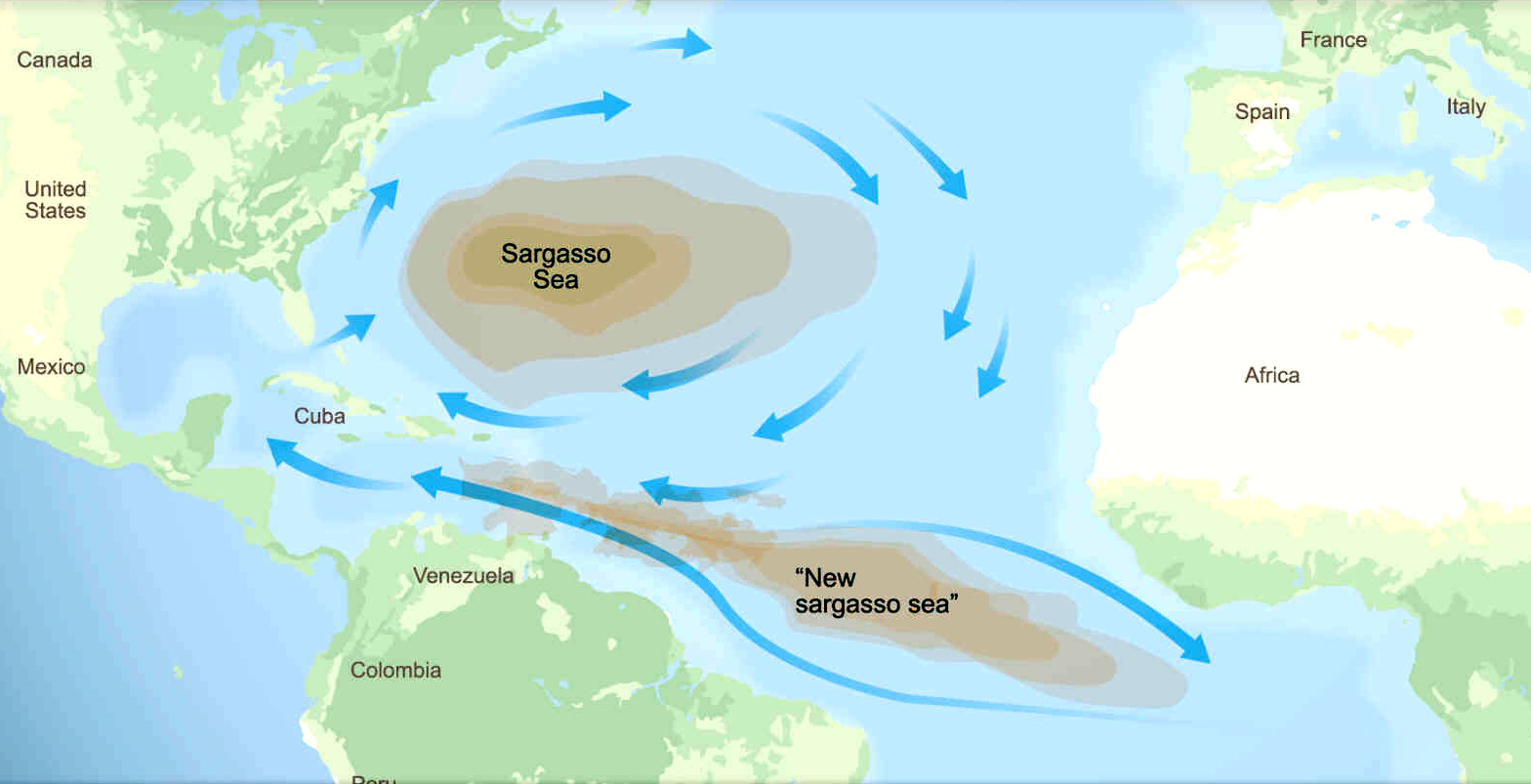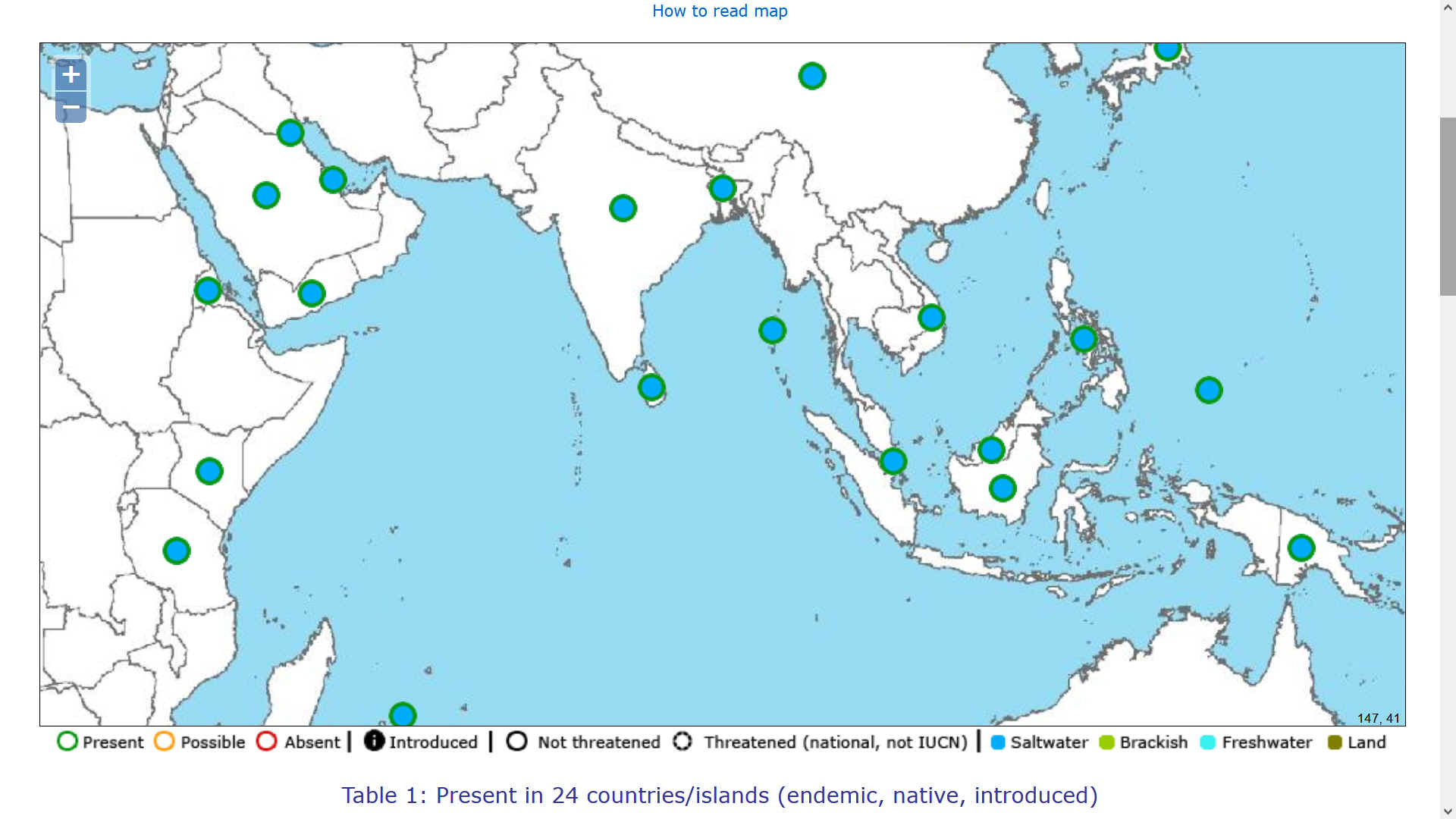|
N E W S A R G A S S O S E A S
Please use our A-Z to navigate this site or return HOME
SARGASSUM - The giant brown seaweed, having shown that it can spread from North to South Atlantic oceans, could spread to the Indian and Pacific oceans as a potentially invasive species. The proof of which (as a theory) is satellite pictures, and changing wind states.
Thus, economic growth, unless zero carbon, is not possible without heating the planet even more.
The answer to failed political policies (FLOP 26) is very often a jolly good war, as in Russia Vs Ukraine. When all cock-ups get thrown to the wind in the media scrum, and a whitewash ensues, until the next band of post-war cutthroats is elected, each with their hands in the pockets of Lucifer's climate change deniers.
But even without conflict, global warming will not reverse for 30-50 years at best, and that is with a fair political wind, as we transition to renewables. Meaning that the conditions for sargassum to populate welcoming equatorial waters around the globe, remains a distinct possibility. Such as the:
Atlantic - North & South Equatorial Banda Ceram Molucca & Timor Seas Pacific Ocean - North & South, Equatorial Belt (Costa Rica, Ecuador, Panama regions)
Seas and oceans in these latitudes could become inundated with macro algae, if the rafts of floating seaweed manage to navigate less hospitable barriers, such as colder regions. Which at the moment, Cape Horn and the Cape of Good Hope appear to offer some protection from invasion.
This is a theory being developed by Nelson Kay (as a volunteer) in 2022, based on his work with the SeaVax team from 2016 - 2020. Though mostly concerning micro and macro plastic recovery and river containment, the ocean engineering and logistical challenges posed by SeaVax are kindred concepts, and may be sympathetically adapted or even interchangeable to some degree.
HOW TO READ THE MAP (TABLE 1) - The literature species report in a country is represented by an icon (a circle) in the middle of the country polygon.
Important: a report in the literature does not necessarily mean that the species is currently present in the country! There are errors in literature, misidentifications, and some species have been locally or globally extirpated or eradicated.
HOW
TO INTERPRET THE MAP (TABLE 1) - The icon in a country polygon indicates that the species has been reported at least once in the country, BUT NOT NECESSARILY that it is present IN THE ENTIRE COUNTRY.
This is particularly so for large countries such as Brazil, USA, Canada, Russia, China, India, Indonesia, Australia, etc.
Academics and scientific institutions inclined to test such thesis, or otherwise wishing to provide data or technological assistance, positive or negative, should please contact the Cleaner Ocean Foundation in the first instance. The aim being to prove or disprove the concept, to advance our knowledge in this little understood area of Oceanology/Oceanography. Degree level students are welcome and post graduates looking for their Masters or other higher level qualifications.
A Cleaner Ocean Foundation crew could be available to cut metal, along with an impressive lineup of institutions and engineering firms - to make it happen. Nelson, having retired from active duty, though available as a go-between and for consultation/steerage, if his help may assist kickstart such investigations.
There are a million reasons for not doing something, and only one driver for diving into a challenge. Most people will use the manifold negatives as an excuse for sitting back in their armchairs. Every now and again, someone is foolhardy enough to roll their sleeves up - and have a go. Despite the enormity of the task.
PLASTIC TIDE - These amazing pictures of a giant plastic tide were taken by Caroline Power. Please note how plastic and sargassum intertwine, creating a separation problem.
CARIBBEAN ISLANDS UNDER THREAT A-Z
Aruba (Netherlands) Cayman Islands (UK) Curaçao (Netherlands) Dominican Republic (Hispaniola) Guadeloupe
(France) Saint
Vincent and the Grenadines Turks
and Caicos Islands
LINKS & REFERENCE
https://www.sealifebase.se/Country/CountryList.php?id=108761&genusname=Sargassum&speciesname=oligocystum&lang=english
AEGEAN - ACIDIFICATION - ADRIATIC - AMBRACIAN GULF - ARCTIC - ATLANTIC - BALTIC - BAY BENGAL - BAY BISCAY - BERING - BLACK - CARIBBEAN - CASPIAN - CORAL - EAST CHINA SEA ENGLISH CH - GOC - GUANABARA - GULF GUINEA - GULF MEXICO - INDIAN - IRC - IONIAN - IRISH - MEDITERRANEAN - NORTH SEA - PACIFIC - PERSIAN GULF - SEA JAPAN STH CHINA - PLASTIC - PLANKTON - PLASTIC OCEANS - RED - SARGASSO - SEA LEVEL RISE - SOUTHERN - TYRRHENIAN - UNCLOS - UNEP - WOC - WWF
This website is provided on a free basis as a public information service. copyright © Cleaner Oceans Foundation Ltd (COFL) (Company No: 4674774) February 2025. Solar Studios, BN271RF, United Kingdom. COFL is a charity without share capital. The names Amphimax™ RiverVax™ and SeaVax™ are trademarks.
|





